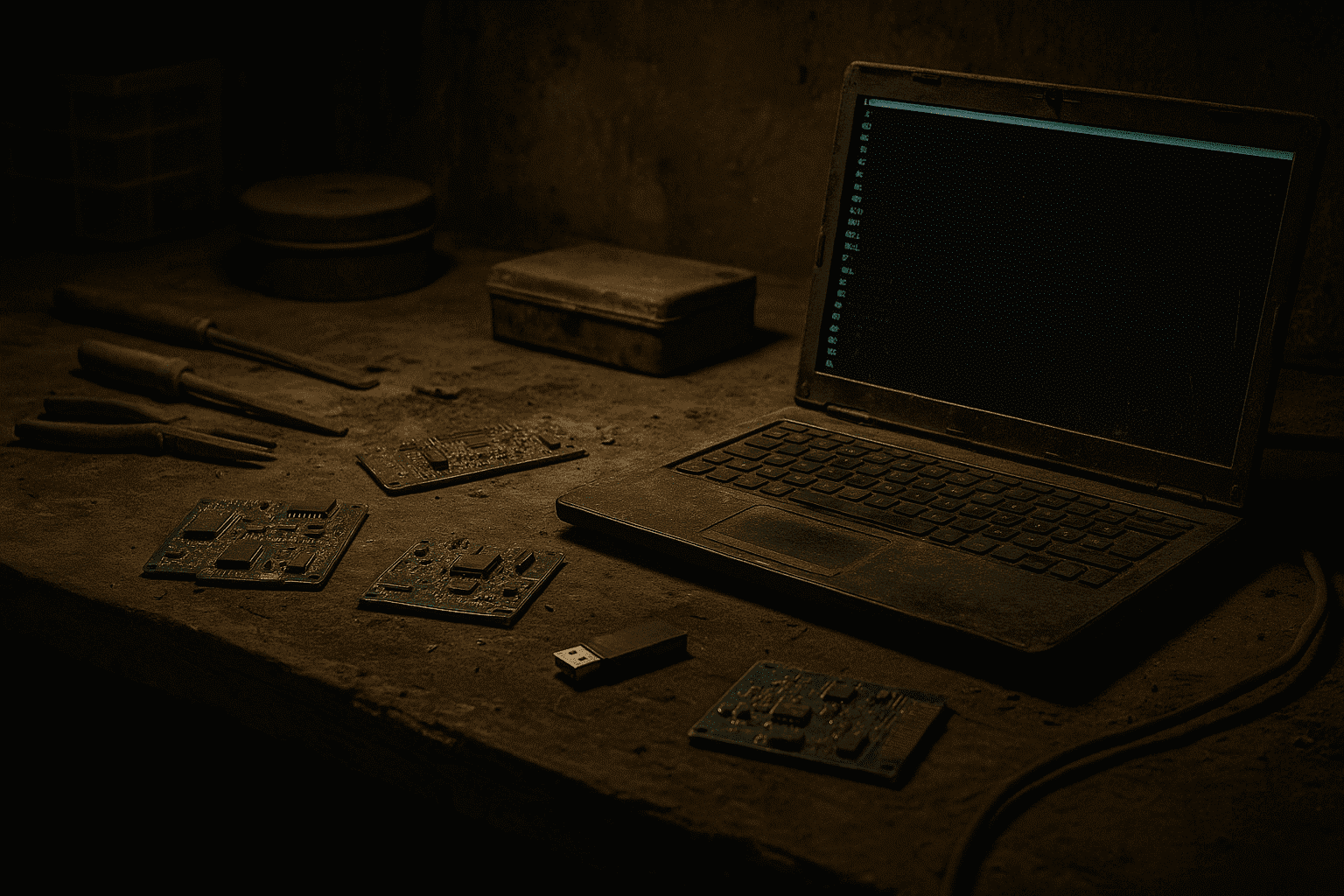
Imagine this: the power grid flickers off, the cloud disappears, and your phone becomes a shiny paperweight. No Wi-Fi. No app updates. No access to the codebases, forums, or data centers we depend on every day.
Now what?
If you want to survive—and even rebuild—you’ll need a different kind of technology. Not the sleek kind with notifications and animations. The kind that runs on scrap metal, uses one-tenth the memory of a smartwatch, and doesn’t need a billion-dollar factory to work.
This is where Forth and Collapse OS come in.
Why Your Current Tech Stack Won’t Survive the Collapse
Most of today’s tech runs on global supply chains and continuous internet access. A single iPhone depends on semiconductors from Taiwan, memory chips from South Korea, and assembly lines in Brazil and China. Cut that chain, and your sleek slab of aluminum and glass is just a fancy mirror.
And even if you manage to power up a computer, there’s another problem: modern code is fat.
Languages like Python and JavaScript assume infinite resources. They rely on layers of abstraction to make programming easier. Convenient, yes. But convenient code is bloated code. It requires massive libraries, frequent updates, and operating systems so complex that no one person understands them fully.
That’s fine when you’ve got cloud servers humming in Oregon and terabytes of RAM to spare.
But in a world powered by scavenged solar panels and repurposed car batteries, bloated code is dead code.
The Minimalist Tech That Actually Works Off-Grid
Forth isn’t pretty. But it works.
It was created in the 1950s to predict satellite positions using punch cards. It runs directly on hardware, minimizes memory usage, and gives you total control over every byte.
Instead of writing dozens of lines to move data around, you can define a Word—a compact, custom command—and call it with just one keystroke. Every command you create becomes part of your own custom language, optimized for the task at hand.
You don’t write Forth like you write JavaScript.
You sculpt it.
And because it runs on minimal hardware, you can load it onto old laptops, calculators, even obsolete game consoles—anything with a CPU and a bit of RAM.
Which brings us to Collapse OS—a tiny operating system designed for a post-apocalyptic world. It boots from a USB stick, runs on scavenged electronics, and gives you the ability to program microcontrollers. With Collapse OS, you can control solar panels, automate irrigation, reboot phone lines—whatever’s left.
How to Prepare for Tech Collapse (Without Panic)
If this all sounds extreme, consider this: the knowledge locked in your laptop is useless if no one can power it up, access it, or interpret it.
Here’s how to get ready—calmly, efficiently, and one step at a time.
Step 1: Download the Tools While the Internet Still Works
Go to collapseos.org. Download both Collapse OS and Dusk OS—a newer version that runs on modern devices and reads common file formats.
Save them to:
- A USB flash drive
- An old, functioning laptop
- A microSD card that fits older phones or tablets
Test boot Collapse OS on an old machine. Make sure it runs. Write down the steps in a physical notebook—because you can’t Google it later.
Then store the backups in safe, dry places. Bonus points if one of those places doesn’t require electricity to access.
Step 2: Learn to Write in Forth
Forth is weird at first. It uses postfix notation (you write 2 3 + instead of 2 + 3) and stores data on a stack, meaning the last thing you put in is the first thing you take out.
But learning Forth rewires your brain—in a good way.
Start with Starting Forth by Leo Brodie. It’s readable, beginner-friendly, and full of hands-on examples.
Set up a tiny workspace with:
- Gforth installed
- A notebook for your favorite custom Words
- A low-power machine or virtual emulator
Your goal: build small programs that control hardware or manipulate memory directly. Try making a digital timer. Or a calculator. Or a tool that logs temperature from a sensor.
Don’t worry if it feels clunky at first. You’re learning to talk to the machine in its native tongue.
Step 3: Simulate a Post-Collapse Coding Environment
This isn’t just role-playing. It’s resilience training.
Shut off your Wi-Fi. Power down your high-end laptop. Boot up a low-RAM device—something with under 2 GB of memory.
Write a basic text editor using only terminal commands. Re-create a file viewer. Track system resources with minimal display.
Focus on programs that:
- Run without dependencies
- Fit into 50 KB or less
- Log data to text files
- Control simple external hardware
Once you’ve built a few of these, you’ll start seeing the bloat in modern programming. You’ll crave simplicity. And you’ll realize how much you don’t need.
Step 4: Join the Permacomputing Movement
If you’re not ready to live off-grid on a sailboat (some folks already do), you can still adopt the mindset.
Permacomputing is about sustainability, not survivalism. It’s the art of using as little tech as needed, in the most efficient way possible. The movement encourages:
- Using durable, repairable hardware
- Writing minimal code that lasts decades
- Learning how your computer actually works
Find communities online, such as Mastodon, mailing lists, and forums like collapseos.org. Share ideas, swap resources, and stay in the loop.
You don’t have to drop everything. Just start small.
Use your computer like you’re borrowing it from the future.
Step 5: Audit Your Tech Footprint
Write down everything you rely on—your cloud drives, streaming services, password managers, and note apps.
Then ask: what happens if the internet vanishes?
Build a digital go-bag:
- Offline copies of essential files
- Printed instructions for key tasks
- Local software that runs without updates
Start small. Switch from cloud docs to plain text files. Move from bloated apps to lightweight alternatives. Replace your to-do app with a printable template and a pen.
And yes—keep a copy of Forth and Collapse OS on hand.
You might never need it.
But if you do, you’ll be glad you didn’t wait until the lights went out.
Final Thought
In a world rushing toward complexity, the answer may lie in simplicity.
Not in building faster machines, but in learning how to do more with less.
Forth and Collapse OS aren’t just survival tools—they’re a reminder that our connection to machines doesn’t need to be abstract, bloated, or disposable. It can be direct. Durable. And deeply intentional.
So don’t just code for today’s world.
Code like you might have to rebuild it.

